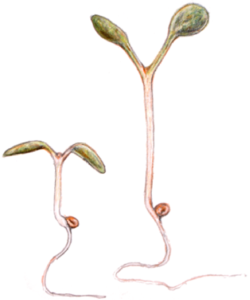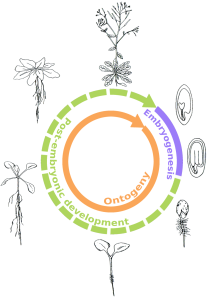Thermomorphogenesis
Temperature is a major factor governing distribution and seasonal behaviour of plants. Being sessile, plants are highly responsive to small differences in temperature and adjust their growth and development accordingly. The suite of morphological and architectural changes induced by high ambient temperatures is collectively called thermomorphogenesis (Quint et al., 2016, Nature Plants). Understanding the molecular genetic circuitries underlying thermomorphogenesis is particularly relevant in the context of climate change as this knowledge will be key to breed for thermo-tolerant crop varieties in a rational fashion. Until quite recently the fundamental mechanisms of temperature perception and signalling remained unknown. Our understanding of temperature signalling is now progressing mainly by exploiting the model plant Arabidopsis thaliana. The transcription factor PHYTOCHROME INTERACTING FACTOR 4 (PIF4) has emerged as a key player and controls phytohormone levels and their activity. To control thermomorphogenesis, multiple regulatory circuits are in place to modulate PIF4 levels, activity, and its downstream mechanisms. Thermomorphogenesis is integrally governed by various light signalling pathways, the circadian clock, epigenetic mechanisms and chromatin-level regulation. Our lab is primarily interested in the regulation of the PIF4-dependent branch of the pathway and recently contributed to understanding of temperature-dependent regulation of PIF4 itself (Delker et al., 2014, Cell Reports; Raschke/Ibanez et al., 2015, BMC Plant Biology). As we are beginning to understand the fundamentals of thermomorphogenesis signaling, we are currently testing the validity of the gained knowledge also in crop systems. In the future, this translational research will become more and more important.


